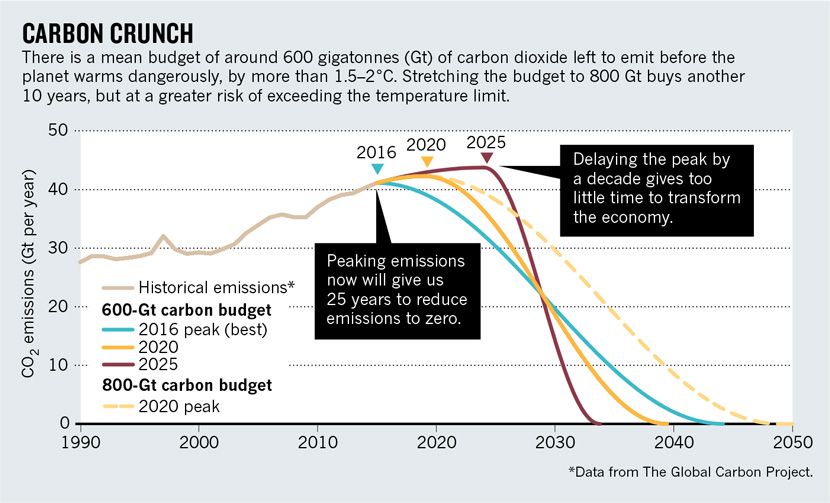But while cement - the key ingredient in concrete - has shaped much of our built environment it also has a massive carbon footprint. What makes up the embodied energy of the building and its materials and is expressed in terms of the carbon dioxide emissions associated with this embodied energy.

Insulation Final 01 Carbon Impact Insulation Batt Insulation
The 2020 Global Status Report for Buildings and Construction from the Global Alliance for Buildings and Construction GlobalABC found that while global building energy consumption remained steady year-on-year energy-related CO 2 emissions increased to 995 GtCO 2 in 2019.

Building material co2 emission. Transporting the materials to the site constitutes 6-8 of total greenhouse gas emissions for a project. Australian firm unveils plan to convert carbon emissions into green concrete Initiative to convert CO2 into solid carbonates aims to produce building materials on. Flexible thin-film solar technologies offer the potentials for new energy harvesting building products with inex- pensive roll-to-roll and deposition production processes and very low carbon manufacturing footprints.
Under the Paris Agreement the building. The buildings and construction sector accounted for 36 of final energy use and 39 of energy and process-related carbon dioxide CO2 emissions in 2018 11 of which resulted from manufacturing building materials and products such as steel cement and glass. Some of these emissions are operational they are produced by the building when it is in use and can later be reduced with energy-efficient renovations.
Or sequestered when they are restored. This increase was due to a shift away from the direct use of coal oil and traditional biomass towards. Concrete is the most extensively used construction material with a global production of around 10 km 3 of concrete every year 2.
This affects the balance of carbon dioxide emissions. Gas that is used for cooking space and water heating in buildings is a fossil fuel and its extraction storage and combustion releases methane a potent greenhouse gas. The rest are embodied carbon emissions that.
The construction sector is a major contributor to global warming responsible for around 18 of global greenhouse gas emissions 1. 16 hours agoRecent reports from the United Nations Environment Programme found that the construction industry accounts for 38 of global energy-related CO2 emissions. Net emissions of carbon dioxide from changes in forestry cover.
CO 2 can be emitted when croplands are degraded. The EC3 tool enables the building industry to transparently measure compare and reduce embodied carbon emissions from construction materials. Construction is one of the largest consumers of raw materials.
The net change in carbon stocks is captured in emissions of carbon dioxide. This does not include grazing lands for livestock. In fact 25 of the worlds timber goes to construction efforts.
Many have long known that buildings account for a whopping 39 of global energy-related CO2 emissions. Developed under the leadership of the Carbon Leadership Forum at the University of Washington in collaboration with Skanska USA the University of Washington and key development partner C Change Labs. What comes as news for many building professionals and policymakers alike is.
EMBODIED ENERGY AND CARBON EMISSION OF BUILDING MATERIALS MATERIAL UNIT ENER-GYUNIT MJ CO2 UNIT KG BRICK ONE BRICK 375 450 033 CEMENT Kg 520 080 LIME Kg 540 040 LIMEFLY. They also contribute almost half of the worlds carbon dioxide emissions. Simonen says that while wood buildings store biogenic carbon dioxide the process of harvesting and turning trees into building materials also spurs the release of biogenic carbon dioxide.
The average greenhouse gas emissions from thin-film PV production. This means reforestation is counted as negative. GHG emissions from the building sector increased 83 since our last report largely as a result of growing fossil gas use.

This Is From The U S Green Building Council Report Over The Next 25 Years Co2 Emissions From Buildi Green Building Sustainable Building Materials Building

Embodied Carbon Emissions In Buildings Greenbuildingadvisor Zero Energy Building Natural Building Materials Energy Conservation

Architecture S Carbon Problem Blueprint For Better Blueprints Climate Change Effects Sustainable Architecture Design

My Blog Green Building Materials Green Building Sustainable Architecture

Infographic Shows The Amount Of Various Building Materials That Can Be Produced For 1 Ton Of Co2 Green Building Materials Building Materials Infographic

2030 Challenge For Products Buildinggreen Com

My Blog Green Building Materials Sustainable Architecture Concrete Architecture

Even A 2020 Peak In Emissions Still Requires Net Zero Global Emissions 20 Years Later In 2040 Emissions Carbon Sequestration Sustainable Building Materials

Life Cycle Of Stuff Climate Change Us Epa Life Cycles Ghg Emissions Cycle

Buildings Can Become A Global Co2 Sink If Made Out Of Wood Instead Of Cement And Steel Carbon Sink Greenhouse Gas Emissions Greenhouse Gases

This Concrete Traps Co2 Emissions Forever Youtube Energy Pictures Emissions Greenhouse Gas Emissions

Concrete The Most Widely Used Construction Material In The World Is Responsible For 8 Of The World S Carbon Construction Materials Building A House Building

Reducing Emissions From Cement Infographic By Rosamund Pearce For Carbon Brief Emissions Climate Change Solar Energy Diy

Embodied Carbon In Construction Calculator Construction Calculator Embody Construction Calculators

Carbon Neutral Buildings Creating Value Through Architecture White Arkitekter In 2021 Energy Efficient Buildings Carbon Neutral Carbon

Change In Construction Materials Could Transform Buildings Into A Global Co2 Sink Timber Buildings Modern Buildings National Building

My Blog Green Building Materials Sustainable Architecture Concrete Architecture
Komentar
Posting Komentar